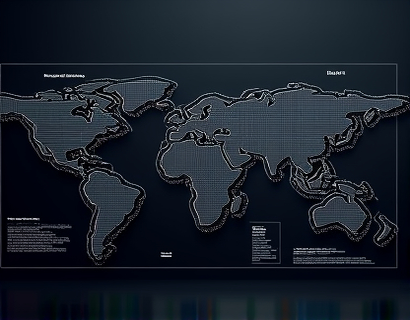Advanced Software for Graph Theory and Fluid Dynamics: Empowering Insights for Complex System Analysis
In the realm of complex system analysis, graph theory and fluid dynamics stand out as critical fields that drive innovation and optimization across various industries. The intricate nature of these domains necessitates sophisticated tools and software to manage, analyze, and visualize the vast amounts of data involved. Advanced software solutions have emerged to address these challenges, offering researchers and engineers powerful instruments to unlock new insights and enhance performance in mathematical modeling and fluid mechanics.
The integration of advanced software in graph theory and fluid dynamics research has revolutionized the way complex data is handled. These tools not only streamline data analysis but also significantly improve visualization capabilities, making it easier to interpret and derive meaningful conclusions from complex datasets. This article delves into the key features and applications of these advanced software solutions, highlighting their impact on research and engineering practices.
Enhancing Data Analysis in Graph Theory
Graph theory, a branch of mathematics that studies the properties and applications of graphs, is fundamental in modeling relationships and structures in various fields, including computer science, biology, and social sciences. Advanced software for graph theory provides robust algorithms and data structures to handle large and complex networks.
One of the primary advantages of these software tools is their ability to perform extensive simulations and computations efficiently. For instance, they can handle large-scale network analysis, identifying critical nodes, communities, and pathways within graphs. This capability is crucial for applications such as social network analysis, where understanding the flow of information and influence is essential.
Moreover, advanced graph theory software often includes features for dynamic graph analysis, allowing researchers to observe how networks evolve over time. This is particularly useful in studying temporal networks, such as traffic patterns or communication networks, where the relationships between nodes change dynamically.
Key Features of Graph Theory Software
- Advanced algorithms for graph traversal and search
- Modules for community detection and clustering
- Tools for network visualization and interaction
- Support for large-scale and dynamic graphs
- Integration with other mathematical and computational tools
These features collectively enable researchers to conduct comprehensive analyses, from basic graph properties to complex network behaviors, facilitating groundbreaking discoveries and insights.
Optimizing Fluid Dynamics Simulations
Fluid dynamics, the study of fluids in motion, plays a vital role in understanding and optimizing various physical processes, from aerodynamics to fluid flow in pipelines. The complexity of fluid behavior requires sophisticated computational methods and high-performance computing resources.
Advanced software for fluid dynamics leverages cutting-edge numerical methods and parallel computing techniques to simulate and analyze fluid flows accurately. These tools are essential for engineers and researchers aiming to optimize designs, reduce drag, and enhance efficiency in various applications, including automotive, aerospace, and environmental engineering.
A significant advantage of these software solutions is their ability to handle multi-physics simulations, where fluid dynamics interacts with other physical phenomena such as heat transfer, structural mechanics, and electromagnetism. This comprehensive approach provides a more realistic and accurate representation of real-world systems.
Core Capabilities of Fluid Dynamics Software
- High-fidelity simulations using finite element and volume methods
- Support for turbulent flow models and multiphase flows
- Visualization tools for flow fields and pressure distributions
- Optimization algorithms for design and parameter studies
- Integration with experimental data for validation and calibration
These capabilities empower researchers to conduct detailed simulations, analyze results, and iterate designs with precision and efficiency, leading to innovative solutions and performance improvements.
Interdisciplinary Applications and Impact
The applications of advanced software in graph theory and fluid dynamics extend beyond their core domains, impacting a wide range of industries and research areas. In the field of biology, for example, graph theory software can model gene regulatory networks and protein interactions, while fluid dynamics software can simulate blood flow and organ function.
In the automotive industry, these tools are indispensable for aerodynamic testing and vehicle design optimization. Engineers use fluid dynamics simulations to reduce drag, improve fuel efficiency, and enhance safety. Similarly, in the energy sector, fluid dynamics software aids in optimizing wind turbine designs and predicting fluid behavior in pipelines and reactors.
The interdisciplinary nature of these software solutions fosters collaboration across different fields, driving innovation and advancing scientific knowledge. By providing powerful and flexible tools, these software solutions enable researchers and engineers to tackle complex problems and push the boundaries of what is possible.
Future Trends and Developments
The field of advanced software for graph theory and fluid dynamics is rapidly evolving, driven by advancements in computing technology and the increasing demand for more sophisticated analytical tools. One notable trend is the integration of machine learning and artificial intelligence techniques into these software solutions.
Machine learning algorithms can enhance the predictive capabilities of simulations, allowing for more accurate and efficient modeling of complex systems. For instance, in fluid dynamics, AI can be used to predict flow patterns and optimize designs based on historical data and simulation results. Similarly, in graph theory, machine learning can assist in identifying patterns and anomalies in large networks, providing deeper insights into system behavior.
Another emerging trend is the development of cloud-based and high-performance computing platforms that enable distributed computing and access to powerful computational resources. This shift facilitates collaborative research and allows for the handling of even larger and more complex datasets, further expanding the potential of these software tools.
Challenges and Opportunities
- Scalability and performance optimization for handling extremely large datasets
- User-friendly interfaces to make advanced tools accessible to a broader audience
- Integration with emerging technologies such as quantum computing
- Enhanced visualization and interactive tools for better data interpretation
- Standardization of protocols and data formats for seamless interoperability
Addressing these challenges will not only improve the functionality and usability of existing software but also open up new opportunities for research and innovation. As the demand for advanced analytical tools continues to grow, the development of more sophisticated and user-friendly software will remain a priority.
Conclusion
Advanced software solutions for graph theory and fluid dynamics have transformed the way researchers and engineers approach complex system analysis. These tools provide powerful capabilities for data analysis, simulation, and visualization, driving innovative discoveries and performance optimizations across various industries.
The interdisciplinary applications and future developments in this field underscore the importance of continued investment in research and development. By harnessing the potential of these advanced software solutions, the scientific community can tackle some of the most challenging problems and push the frontiers of knowledge in graph theory and fluid dynamics.










































